Do you have a question about the HP ProLiant ML350e Gen8 and is the answer not in the manual?
Identifies front panel components like drive bays, drives, and USB ports.
Details the status and function of front panel power, NIC, health, and UID LEDs.
Illustrates and lists rear panel connectors such as USB, iLO, Video, Serial, and NIC.
Explains the status indicators for UID and NIC LEDs on the rear panel.
Identifies various components on the system board, including slots, sockets, and connectors.
Describes the functions of the twelve-position system maintenance switch for configuration.
Explains power LED status and the NMI header for memory dumps and troubleshooting.
Details DIMM slots, numbering, and components of the Smart Array controller card.
Explains drive numbering and interprets SAS/SATA drive LED status combinations.
Details LED status indications for FBWC and B120i cache modules.
Describes the status and meaning of LEDs on the server drives.
Identifies fans, redundant power supply connectors, and the included Torx screwdriver.
Instructions for powering up and powering down the server using various methods.
Procedures for removing and installing tower and security bezels.
Steps for removing and installing rack bezels and access panels.
Guidelines for safely extending the server from its rack for maintenance.
Instructions for removing and installing PCI and system air baffles.
Steps to remove the fan cage and individual fans for maintenance.
Procedures for removing the FBWC capacitor pack and DVD drives.
Procedures for removing expansion boards and installing drive cages.
Details HP Care Pack services for hardware, software, and integrated support.
Covers space, airflow, and temperature requirements for server installation.
Discusses power needs, grounding, and electrical safety guidelines.
Provides warnings and cautions for rack installation and server handling.
Covers identifying carton contents, installing hardware, and setting up a tower server.
Steps for installing the server into a rack and powering it up.
Guides on installing the OS and registering the server.
Guidance on reading installation instructions for multiple hardware options.
Procedures for installing the security bezel and second processor.
Detailed steps for installing a server processor, including safety precautions.
Explains memory types, speeds, capacities, and configuration guidelines.
Details memory channels, ranks, and DIMM characteristics.
Guidelines for populating DIMM slots and supported Advanced Memory Protection modes.
Step-by-step instructions for installing a DIMM into the server.
Covers SAS drive guidelines and installing hot-plug drives.
Steps for installing non-hot-plug SAS or SATA drives.
Procedures for installing optical drive cages and individual optical drives.
Steps for installing a storage controller card.
Instructions for installing FBWC cache modules and capacitor packs.
Procedure for installing the B120i cache module.
Steps for installing various expansion boards into PCI slots.
Procedures for installing eight-bay SFF and six-bay LFF hot-plug drive cages.
Steps to convert a tower server to a rack-mount configuration.
Instructions for installing and enabling the Trusted Platform Module.
Illustrates SATA and SAS drive cabling for non-hot-plug and hot-plug configurations.
Shows cabling for Smart Array controllers with LFF drive bays.
Details ATX and RPS power cabling connections within the server.
Illustrates data cabling for optical drives and DVD drives.
Lists utilities and their operating modes (online, offline, or both).
Details HP iLO features for server setup, monitoring, and administration.
Explains the AHS for continuous monitoring, diagnostics, and issue resolution.
Describes the IML for recording and viewing server events.
Covers the embedded tool for server setup, OS installation, and maintenance.
Details diagnostic tools and the utility for resetting system settings.
Information on remote support software and server deployment scripting tools.
Details SPP for firmware updates and SUM for software deployment.
Explains RBSU for system configuration, including boot options and AMP modes.
Describes utilities like ACU, ORCA, ROMPaq, and Automatic Server Recovery.
Covers driver updates, software, firmware, and version control.
Lists HP ProLiant troubleshooting guides for fault isolation and error resolution.
Steps for removing and replacing the system board battery.
Information on regulatory model numbers, FCC compliance, and class ratings.
Compliance notices for Canada, EU directives, and waste disposal regulations.
Guidelines and methods for preventing electrostatic discharge during handling.
Details operating temperature, humidity, dimensions, and weight.
Lists input requirements and output ratings for various power supply units.
Information on contacting HP support and the Customer Self Repair program.
Definitions of technical acronyms and abbreviations used in the manual.
Instructions for providing feedback to improve the documentation.
Identifies front panel components like drive bays, drives, and USB ports.
Details the status and function of front panel power, NIC, health, and UID LEDs.
Illustrates and lists rear panel connectors such as USB, iLO, Video, Serial, and NIC.
Explains the status indicators for UID and NIC LEDs on the rear panel.
Identifies various components on the system board, including slots, sockets, and connectors.
Describes the functions of the twelve-position system maintenance switch for configuration.
Explains power LED status and the NMI header for memory dumps and troubleshooting.
Details DIMM slots, numbering, and components of the Smart Array controller card.
Explains drive numbering and interprets SAS/SATA drive LED status combinations.
Details LED status indications for FBWC and B120i cache modules.
Describes the status and meaning of LEDs on the server drives.
Identifies fans, redundant power supply connectors, and the included Torx screwdriver.
Instructions for powering up and powering down the server using various methods.
Procedures for removing and installing tower and security bezels.
Steps for removing and installing rack bezels and access panels.
Guidelines for safely extending the server from its rack for maintenance.
Instructions for removing and installing PCI and system air baffles.
Steps to remove the fan cage and individual fans for maintenance.
Procedures for removing the FBWC capacitor pack and DVD drives.
Procedures for removing expansion boards and installing drive cages.
Details HP Care Pack services for hardware, software, and integrated support.
Covers space, airflow, and temperature requirements for server installation.
Discusses power needs, grounding, and electrical safety guidelines.
Provides warnings and cautions for rack installation and server handling.
Covers identifying carton contents, installing hardware, and setting up a tower server.
Steps for installing the server into a rack and powering it up.
Guides on installing the OS and registering the server.
Guidance on reading installation instructions for multiple hardware options.
Procedures for installing the security bezel and second processor.
Detailed steps for installing a server processor, including safety precautions.
Explains memory types, speeds, capacities, and configuration guidelines.
Details memory channels, ranks, and DIMM characteristics.
Guidelines for populating DIMM slots and supported Advanced Memory Protection modes.
Step-by-step instructions for installing a DIMM into the server.
Covers SAS drive guidelines and installing hot-plug drives.
Steps for installing non-hot-plug SAS or SATA drives.
Procedures for installing optical drive cages and individual optical drives.
Steps for installing a storage controller card.
Instructions for installing FBWC cache modules and capacitor packs.
Procedure for installing the B120i cache module.
Steps for installing various expansion boards into PCI slots.
Procedures for installing eight-bay SFF and six-bay LFF hot-plug drive cages.
Steps to convert a tower server to a rack-mount configuration.
Instructions for installing and enabling the Trusted Platform Module.
Illustrates SATA and SAS drive cabling for non-hot-plug and hot-plug configurations.
Shows cabling for Smart Array controllers with LFF drive bays.
Details ATX and RPS power cabling connections within the server.
Illustrates data cabling for optical drives and DVD drives.
Lists utilities and their operating modes (online, offline, or both).
Details HP iLO features for server setup, monitoring, and administration.
Explains the AHS for continuous monitoring, diagnostics, and issue resolution.
Describes the IML for recording and viewing server events.
Covers the embedded tool for server setup, OS installation, and maintenance.
Details diagnostic tools and the utility for resetting system settings.
Information on remote support software and server deployment scripting tools.
Details SPP for firmware updates and SUM for software deployment.
Explains RBSU for system configuration, including boot options and AMP modes.
Describes utilities like ACU, ORCA, ROMPaq, and Automatic Server Recovery.
Covers driver updates, software, firmware, and version control.
Lists HP ProLiant troubleshooting guides for fault isolation and error resolution.
Steps for removing and replacing the system board battery.
Information on regulatory model numbers, FCC compliance, and class ratings.
Compliance notices for Canada, EU directives, and waste disposal regulations.
Guidelines and methods for preventing electrostatic discharge during handling.
Details operating temperature, humidity, dimensions, and weight.
Lists input requirements and output ratings for various power supply units.
Information on contacting HP support and the Customer Self Repair program.
Definitions of technical acronyms and abbreviations used in the manual.
Instructions for providing feedback to improve the documentation.
| Memory slots | 12 |
|---|---|
| Internal memory | 4 GB |
| Memory clock speed | - MHz |
| Internal memory type | DDR3-SDRAM |
| Maximum internal memory | 192 GB |
| Bus type | QPI |
| Stepping | M1 |
| FSB Parity | No |
| Scalability | 2S |
| Processor code | SR0LR |
| Processor cache | 10 MB |
| Processor cores | 4 |
| Processor model | E5-2407 |
| System bus rate | 6.4 GT/s |
| Processor series | Intel Xeon E5-2400 |
| Processor socket | LGA 1356 (Socket B2) |
| Processor codename | Sandy Bridge EN |
| Motherboard chipset | Intel C600 |
| Processor frequency | 2.2 GHz |
| Processor cache type | Smart Cache |
| Processor lithography | 32 nm |
| Processor manufacturer | Intel |
| Processor package size | 45 x 42.5 mm |
| Processor operating modes | 64-bit |
| ECC supported by processor | Yes |
| Supported instruction sets | AVX |
| Thermal Design Power (TDP) | 80 W |
| Number of processors installed | 1 |
| Maximum number of PCI Express lanes | 24 |
| Memory channels supported by processor | Triple |
| Memory clock speeds supported by processor | 800, 1066 MHz |
| Memory bandwidth supported by processor (max) | 25 GB/s |
| Maximum internal memory supported by processor | 375 GB |
| HDD size | 3.5 \ |
| HDD speed | 7200 RPM |
| RAID levels | 0, 1, 10 |
| HDD interface | Serial ATA III |
| Optical drive type | DVD-ROM |
| Total storage capacity | 500 GB |
| Maximum storage capacity | 54 TB |
| LAN controller | HP NC361i |
| Cabling technology | 10/100/1000Base-T(X) |
| Ethernet interface type | Gigabit Ethernet |
| PS/2 ports quantity | 0 |
| USB 2.0 ports quantity | - |
| Ethernet LAN (RJ-45) ports | 2 |
| Power supply | 460 W |
| Power supply input frequency | 50 - 60 Hz |
| Storage temperature (T-T) | -30 - 60 °C |
| Operating temperature (T-T) | 10 - 35 °C |
| Storage relative humidity (H-H) | 5 - 95 % |
| Operating relative humidity (H-H) | 10 - 90 % |
| Chassis type | Tower (5U) |
| PCI Express slots version | 3.0 |
| Processor ARK ID | 64614 |
| Intel Identity Protection Technology version | 0.00 |
| Depth | 740 mm |
|---|---|
| Width | 218 mm |
| Height | 462 mm |
| Weight | 26850 g |
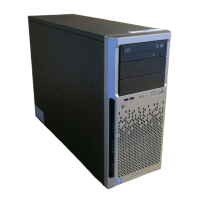
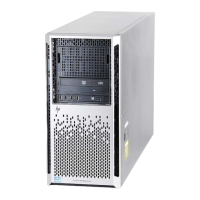
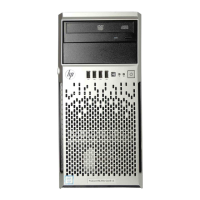
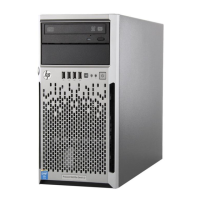
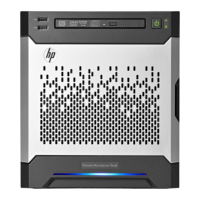
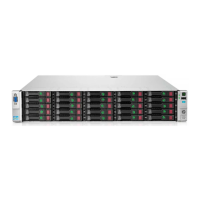
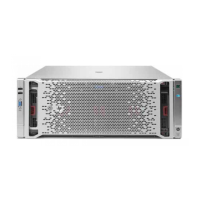
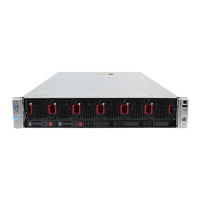
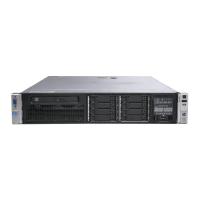
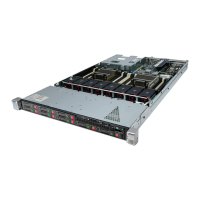
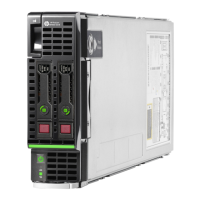
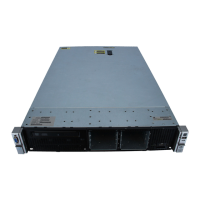
